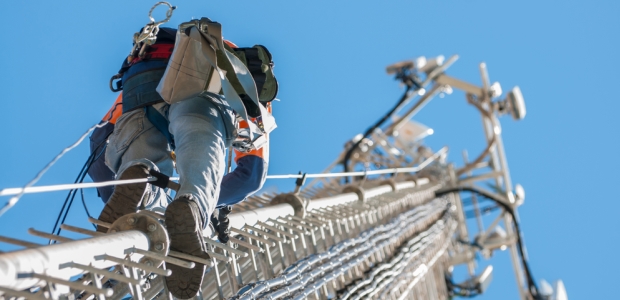
OSHA Seeking Input on Tower Workers' Safety
The agency is asking the industry for information on the types of hazards that communication tower workers encounter, the types of incidents (both fatal and non-fatal) that occur as a result, and the best methods employers can use to address the hazards.
OSHA has published a request for information about workers' safety when constructing and maintaining communication towers. Its notice says a search of OSHA's Integrated Management Information System database found 107 incidents from 2003 through 2013 that resulted in 91 fatalities and 17 injuries, with 79 of the deaths due to falls. Structural collapses killed an additional eight people, three fatalities involved electrocutions, and the last fatality involved an employee struck by a load while working on a tower. In addition, 2013 was the deadliest year for communication tower workers since 2006. According to 2013 OSHA incident investigation reports, there were 15 incidents that year, resulting in 13 deaths and three injuries that required hospitalization.
The increasing demand for wireless and broadcast communications during the past 30 years "has spurred dramatic growth in communication tower construction and maintenance" the document states, adding that employees regularly climb anywhere from 100 to 2,000 feet and face the risk of falls, structural collapses, electrical hazards, and hazards associated with inclement weather.
"Work on communication towers often involves complex business relationships among multiple companies. Many communication towers are owned by dedicated tower companies, rather than broadcast or cell phone companies (carriers). The tower companies then lease space on the towers to wireless carriers. When a carrier needs to undertake a large-scale installation or upgrade project, it will contract with a construction management company (called a 'turfing vendor'). The turfing vendor typically hires specialized subcontractors to perform specific elements of the project, and those subcontractors may further contract with other companies to perform some of the work. It is not uncommon to have as many as six or seven layers of subcontractors between the carrier and the company that employs the workers who actually perform the work (or certain parts of the work). This business structure poses challenges to setting and enforcing safety rules and ensuring the well-being of employees," the document states.
"We understand the importance of this industry, but workers' lives should not be sacrificed for a better cell phone signal. OSHA is inviting the public to tell us what we can do to better protect these workers," said Dr. David Michaels, assistant secretary for occupational safety and health. OSHA is seeking information within the next 60 days from all parties in the contracting chain, including tower workers, wireless carriers, engineering and construction management firms, tower owners, and tower construction and maintenance companies.
To submit a comment, visit http://www.regulations.gov and search for Docket No. OSHA-2014-0018.
Several OSHA standards govern communication tower maintenance work, and there are consensus standards, as well, including the Telecommunications Industry Association standard TIA-222-G, Structural Standard for Antenna Supporting Structures and Antennas, and TIA-1019, Standard for Installation, Alteration and Maintenance of Antenna Supporting. An ANSI standard now under development, ANSI A10.48, will address safety practices for the construction and maintenance of communication towers, the document state. In addition, North Carolina and Michigan have communication tower standards in place, and Washington State is planning to update its telecommunications standard.